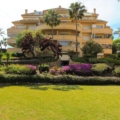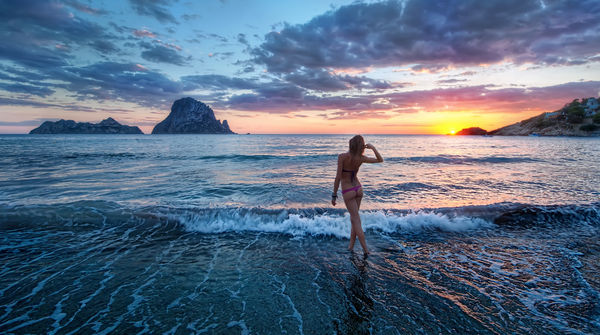Most travel guides list La Coruna in Spain as just a tiny blip on the radar, but do not let that fool you. This phenomenal town offers visitors world class shopping, a thriving cultural center and one of Spain’s best beach getaways on the northern coast. With a storied past as rich in history as Spain’s Barcelona and Madrid, La Coruna is made to be an exception. Although it normally draws domestic tourists and the occasional English holiday goer, it deserves a higher place in the world of tourism. A trip to the Tower of Hercules is enough to make even the most seasoned of travelers to fall in love.
Built by a God

According to legend, the Tower of Hercules was built by the hero himself. After an arduous battle with the giant Geryon, Hercules succeeded in cutting off Geryon’s head. In commemoration of the day, he decreed that a city be built on its spot. Today, La Coruna and the lighthouse stand at the location where Hercules was said to have fought the giant.
Despite this dubious tale, the Tower of Hercules actually carries a past that goes back to the time when Roman soldiers occupied the area. In need of a lighthouse, they placed one on a rocky, wind-beaten crag at the end of La Coruna’s isthmus. Visitors to the area can visit the lighthouse for free, although climbing to the top costs a couple of Euros. A glimpse from the top is all it takes to see why the world’s oldest operational lighthouse has been left standing. The panoramic view shows all of the old city’s monuments, a park bursting with wild flowers and nothing but the Atlantic to the west. After 284 steps up the tower, the view made it well worth the climb.
The biggest draw to the area is the park that surrounds the Tower of Hercules. Several dirt trails loop around the area aimlessly and make for a pleasant afternoon stroll. On my visit, I spent some time crawling across the rocky seashore. Situated upon a rock that jutted outwards above the sea, I let the ocean spray crash against my feet as the waves rolled in. Behind me, children played on rented Segway’s and bicyclists zoomed along the trail.
Chocolate and Churros: the Perfect Afternoon Snack
After a day wandering the seashore and climbing among mussel covered rocks, nothing is better than dipping a few churros in chocolate. Just a few blocks south of the Tower of Hercules, stop at Chocolateria Valor in the Plaza de Maria Pita. Thick, rich chocolate—too thick to be called hot chocolate, in all honesty—is served up every day from 5 to 10 PM. Although the Chocolateria Valor has frothy milkshakes and steamy coffee, the chocolate and churros option is a visitor’s best bet. From a vantage point at this very affordable café, try people watching.
The Plaza de Maria Pita is large by even Spain standards. Named after the girl who saved La Coruna from the English, the Plaza de Maria Pita is the hub of the city. From the café, travelers can walk directly across the plaza and up Calle de San Agustin. The street will end roughly 100 meters later at the Plaza del Humor. Although it would not be worth a visit on its own, this funny plaza actually contains statues of humorous figures from the past. Ranging from statues of the Pink Panther to Cervantes, this square has all of the top humorous figures of the past—and one that does not belong. Extra points to the person who can guess who it is!
From its classic churches to the promenade that encircles the marina, La Coruna is an unknown vacation hotspot that begs to be discovered. Spend a few days here wandering around the Plaza de Maria Pita or climbing the Tower of Hercules and learn why the locals think gods made their city.
[box]Jeremy Haze is a blogger and adventure traveler from Brisbane, Australia. This latest adventure was made possible thanks to the sponsoring cruise company.[/box]




1 Comment
love guru
Really this town is so nice and i like it
Comments are Closed.